I made my way towards Eureka Springs, only making one more stop at the old Beulah Union Church (built 1921):

And then I finally made it to Eureka Springs, which is one of the most charming and quirky places in the Ozark Mountains. There are over 60 springs here, which people once thought had healing properties. I drove in and found a parking space behind the Carroll County Courthouse, which was built in 1908:

Within a few years of its founding in 1879, Eureka Spring grew into a bustling city and tourist destination. By 1881, the population grew to 4,000 people and made Eureka the fourth largest city in Arkansas.

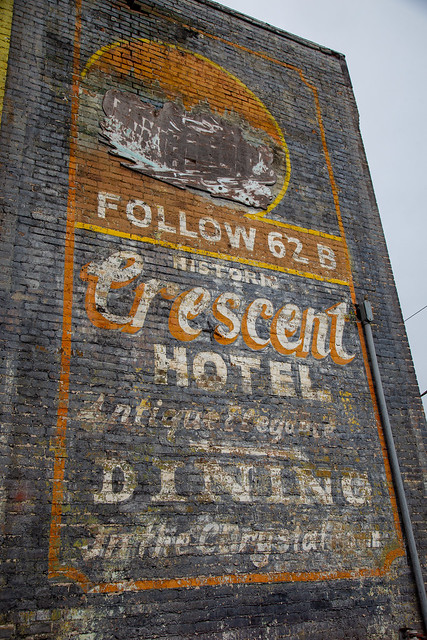
For a city of its size, Eureka Springs contains an incredibly large number of historic and well-preserved Victorian buildings. In 1970, the entire town of Eureka Springs was listed on the National Register of Historic Places. And it been named one of America's Distinctive Destinations by the National Trust for Historic Preservation.
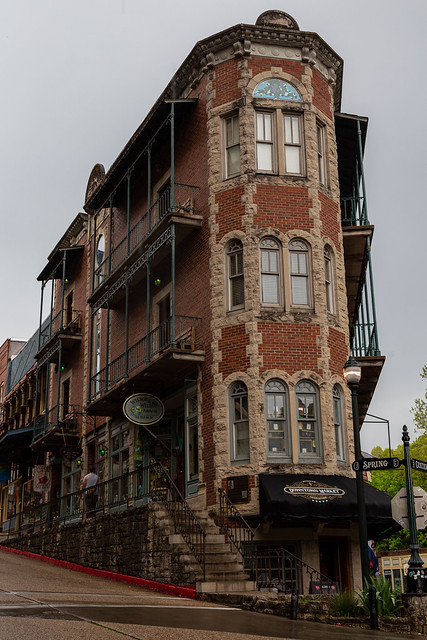
Sitting in one of the flattest (and therefore most prominent) places in Eureka Springs is the Basin Spring Park, which was set aside as a park in 1890. The fountain here gets water from Basin Spring.
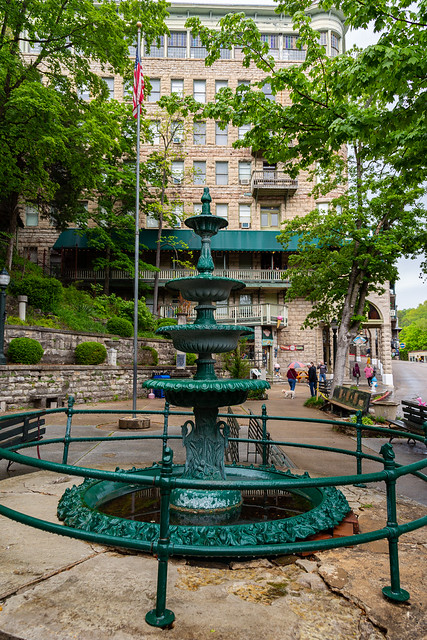
And the view of Basin Park from the nearby Basin Park Hotel, a massive and historic hotel that was built in 1905. Because it was built on a steep hillside, the Basin Park Hotel was listed in Ripley's Believe It Or Not as having a ground floor entrance on each floor of the seven story building.
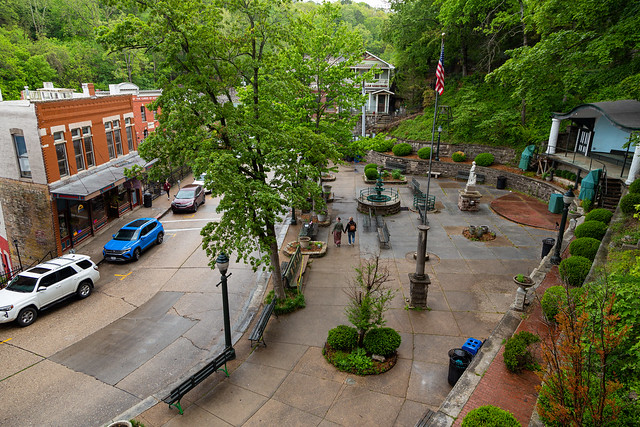
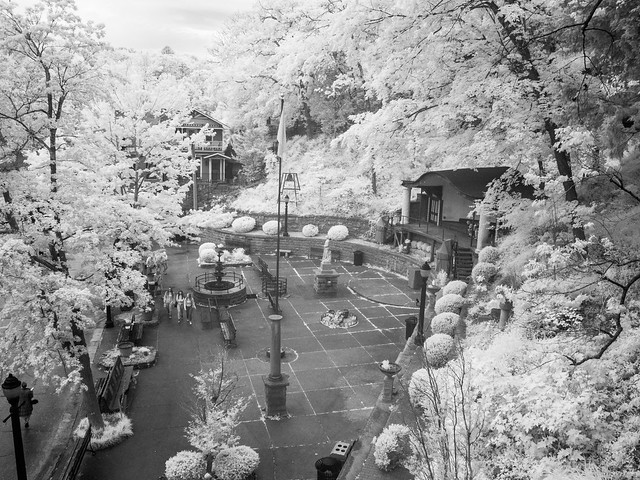
Eureka Springs is nestled amongst a series of steep hillsides and ravines. The local architecture reflects the topography. Many buildings have street-level entrances on more than one floor, and none of the streets in the historic center meet a right angles. In the 1880s, an article described the city as "Everywhere that a human abode could be constructed, houses of every description, tents and shelters, sprang up all over the mountain tops, hanging by corners on steep hillsides, perched upon jutting borders, spanning the gulches, or nestling under crags and in grottoes. It is a most peculiar looking place, presenting an apparent disregard to anything like order and regularity or arrangement, with its two-story streets, its winding thoroughfares and circular pathway.”
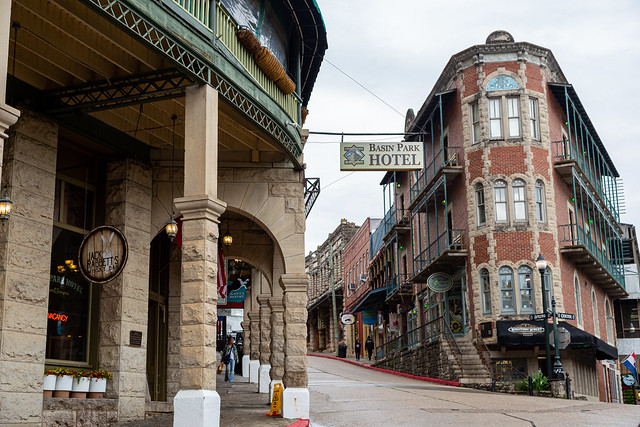
Eureka Spring's modern history is just as quirky as its Victorian early days. In the 1960s, a man named Gerald K. Smith moved to Eureka Springs with dreams of building a religious theme park there. Smith was a strange guy (he has been described as both a white supremacist and an antisemite). His plans for a theme park and a life-size replica of Jerusalem never came to fruition, but he did construct a seven-story statue of Jesus called the Christ of the Ozarks. Also he started the Great Passion Play, which has since become the most-attended outdoor play in the country. At the same, Eureka Springs was also becoming a popular destination for hippies, counter-culture followers, artists and LGBTQ+ people. In 2014, Eureka Springs opened its courthouse on a Saturday so that it could be the first city in the state to issue marriage licenses to same-sex couples.
Many of the steep staircases that connect the city's streets have been painted with murals, like this one of a rainbow tree and waterfall.
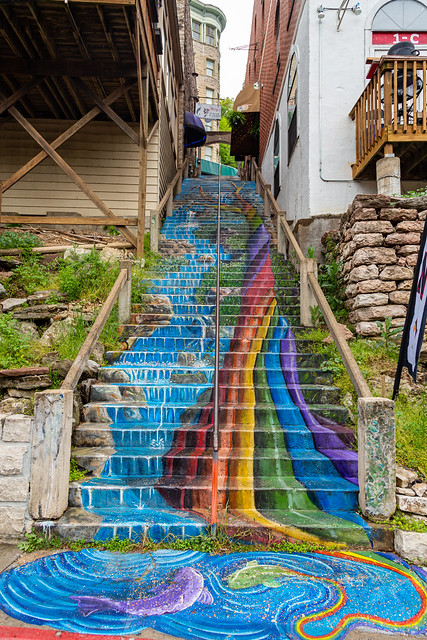
And another rainbow one (the rainbow connection?):

The founders of Eureka Springs were smart enough to make sure the actual springs were preserved, and many of them are part of small parks situated across the city. One of the most interesting is the Grotto Spring, which flows out from under an overhanging rock ledge. In the 1890s, the spring was enclosed behind some ornamental rocks to help protect it during construction of a nearby road. A stone above the entrance is marked with esto perpetua, which declared "the prevailing belief that these healing waters would flow forth forever"

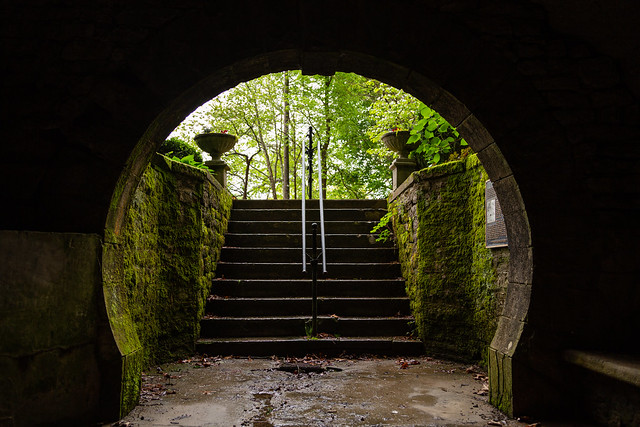

Just down the road is the old Palace Hotel, which was built in 1901. The interestingly-shaped neon sign out front was added in the 1940s, and is said to be the oldest neon sign west of the Mississippi River.

The most famous hotel in Eureka Springs is the Crescent Hotel, which opened in 1886 as a resort for the rich and famous. It's now thought to be one the most haunted hotels in the country. On this visit, the spookiest thing was the huge number of high school kids who looked like they were there for prom.

Across the street from the Crescent (or down the hill) is the St. Elizabeth's Church, a catholic church that was built in 1909. The church's architecture was inspired by the Hagia Sophia in Istanbul.

On the edge of Eureka Springs, right by the old train station, is this massive abandoned building. This was built in 1893 and was the Citizens’ Electric Company Light and Power Plant, Ice House and Cold Storage Building.

The building had coal boilers that provided electricity for both Eureka Springs and its electric street car lines. And in part of the building you can supposedly still find the ice making equipment that dates back to the early 1900s.
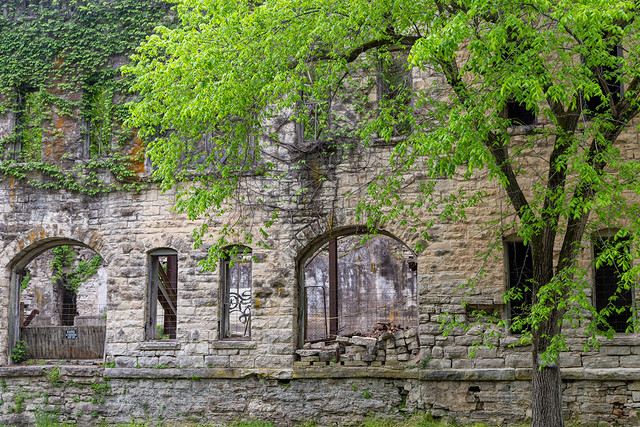
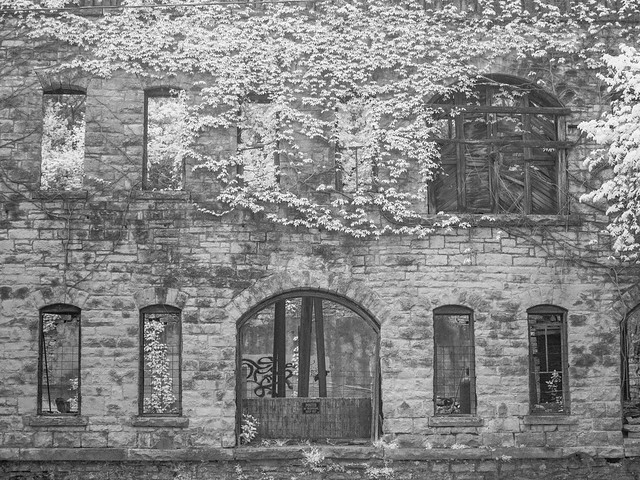
Parked next to the building were these old rail cars:



No comments:
Post a Comment